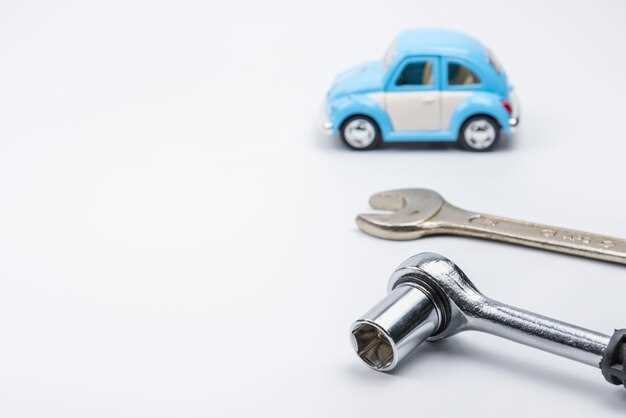
Owning a car is a significant responsibility that goes beyond merely filling the tank or choosing the right insurance. Ensuring your vehicle remains in good condition requires consistent care and maintenance. Regular attention to your car not only enhances its performance but also prolongs its lifespan, making it a wise investment for any homeowner.
Basic car maintenance tasks can often be handled at home, saving you both time and money. Understanding the essential aspects of vehicle care, such as checking oil levels, monitoring tire pressure, and inspecting brakes, can empower you to address minor issues before they escalate into major problems. This proactive approach fosters a safer driving experience and minimizes costly repairs in the long run.
In this article, we will explore simple yet effective tips for maintaining your car at home. By incorporating these practices into your routine, you’ll not only keep your vehicle running smoothly but also gain confidence in your ability to care for one of your most valuable assets.
How to Check and Maintain Tire Pressure
Maintaining proper tire pressure is crucial for the overall performance and safety of your car. Regular checks and adjustments can improve fuel efficiency, prolong tire life, and enhance handling. Here’s how to check and maintain tire pressure effectively.
Step 1: Gather Your Tools
You will need a reliable tire pressure gauge and an air compressor. These tools can help you accurately measure and adjust the pressure in your tires.
Step 2: Know Recommended Pressure Levels
Refer to your car’s owner manual or the sticker located inside the driver’s side door jamb for the recommended tire pressure. This specification is crucial for optimal maintenance and care, as incorrect pressure can lead to uneven wear.
Step 3: Check Tire Pressure
Begin by ensuring the tires are cold, as heat from driving can increase pressure readings. Remove the valve cap from one tire, and press the tire pressure gauge firmly onto the valve stem. Read the gauge to see if the pressure is within the recommended range.
Step 4: Inflate or Deflate Tires
If the pressure is too low, use an air compressor to inflate the tire until it reaches the desired level. If it’s too high, release some air until the appropriate pressure is achieved. Regular maintenance checks should be performed at least once a month to ensure tire longevity.
Step 5: Recheck Pressure
After inflating or deflating, recheck the pressure with the gauge to confirm that it meets the specified level.
Step 6: Replace the Valve Cap
Once pressure is at the correct level, do not forget to securely replace the valve cap. This small step helps prevent dirt and moisture from entering the valve, contributing to the longevity of your tires.
Tips for Ongoing Maintenance
Regularly inspecting your tires for signs of wear, checking for punctures, and rotating them can significantly enhance their lifespan. Keeping the tires properly inflated is a fundamental aspect of car maintenance that every homeowner should incorporate into their routine.
Replacing Engine Oil: Step-by-Step Guide

Routine maintenance is essential for the longevity of your car. One of the most crucial aspects of car care is regularly replacing the engine oil. This process not only helps to ensure optimal performance but also extends the life of your vehicle. Here’s a simple step-by-step guide to help you replace your engine oil at home.
Step 1: Gather Your Supplies
Before starting, collect all necessary supplies: fresh engine oil, an oil filter, an oil filter wrench, an oil catch pan, a funnel, and a socket wrench. Ensure you have the correct oil type and capacity as specified in your car’s manual.
Step 2: Prepare Your Car
Park your car on a level surface and turn off the engine. Allow the engine to cool down for a few minutes to avoid burns. Engage the parking brake for safety.
Step 3: Drain Old Oil
Place the oil catch pan under the oil pan. Locate the drain plug at the bottom of the pan and use a socket wrench to remove it. Allow the old oil to fully drain into the pan. This may take several minutes, so be patient.
Step 4: Replace the Oil Filter
Using an oil filter wrench, unscrew the old oil filter. Before installing the new filter, apply a little new oil to the gasket of the new filter. This ensures a proper seal. Install the new filter by hand, tightening it securely.
Step 5: Add New Oil
Once the old oil has drained completely, replace the drain plug and tighten it. Using a funnel, pour the new engine oil into the oil fill cap located on top of the engine. Refer to your car’s manual for the correct amount.
Step 6: Check Oil Level
After adding oil, wait a few minutes and then use the dipstick to check the oil level. If necessary, add more oil until the dipstick indicates the proper level.
Step 7: Start Your Engine
Start your car and let it run for a few minutes. Check for leaks around the oil filter and drain plug. Turn off the engine and allow it to settle. Recheck the oil level and add more oil if needed.
Step 8: Dispose of Old Oil
Properly dispose of the old oil and filter at an authorized recycling center or garage. Never pour oil down the drain or throw it in the trash.
By following these steps for oil replacement, you can ensure that your car receives the necessary maintenance for reliable performance. Regular oil changes will not only keep your engine healthy but also contribute to the overall care of your vehicle.
Cleaning and Replacing Air Filters at Home

Air filters play a crucial role in your vehicle’s performance and overall maintenance. Regular care and maintenance of these filters can help enhance air quality and engine efficiency. Here’s how you can effectively clean and replace air filters at home.
Follow these simple steps for DIY air filter care:
-
Identify the Right Filter:
Determine which type of air filter your vehicle has–engine air filters or cabin air filters. Refer to your owner’s manual for the specific location and type.
-
Gather Necessary Tools:
Prepare the tools you need for the task, including:
- Screwdriver (if needed)
- Vacuum cleaner
- Clean cloth
- Replacement filter (if applicable)
-
Access the Filter:
Open the hood of your vehicle and locate the air filter compartment. It may require removing screws or clips to access the filter.
-
Inspect the Air Filter:
Carefully take out the air filter and check for dirt and debris. A clean filter is usually light in color, while a dirty one appears dark and clogged.
-
Cleaning the Filter:
If the filter is reusable, you can clean it using the following method:
- Use a vacuum cleaner to remove loose dirt.
- Gently wash the filter with warm, soapy water and a soft brush.
- Rinse thoroughly and let it dry completely before reinstalling.
-
Replacing the Filter:
If the air filter is worn out or heavily soiled, replace it with a new one. Ensure the replacement filter fits properly and matches the specifications outlined in your owner’s manual.
-
Reassemble and Test:
Reattach any screws or clips to secure the air filter compartment. Start your vehicle and ensure there are no irregular noises, indicating that everything is in place.
Regular maintenance of air filters not only improves your car’s performance but also ensures a healthier environment inside your vehicle. By incorporating these simple DIY cleaning and replacement methods, you can take an essential step toward keeping your car in excellent condition.

